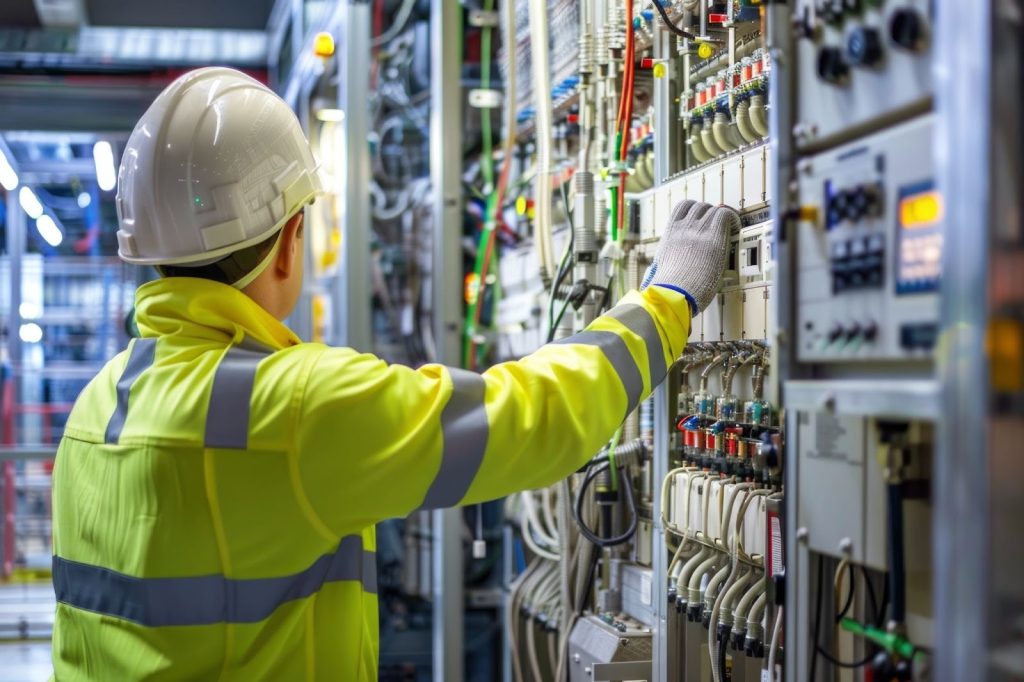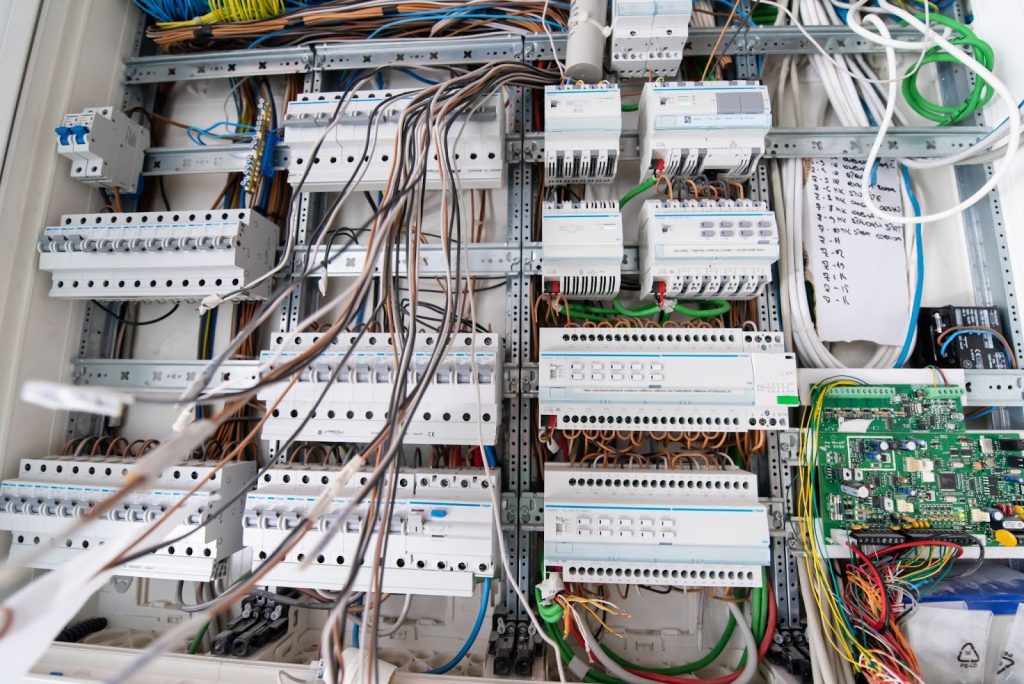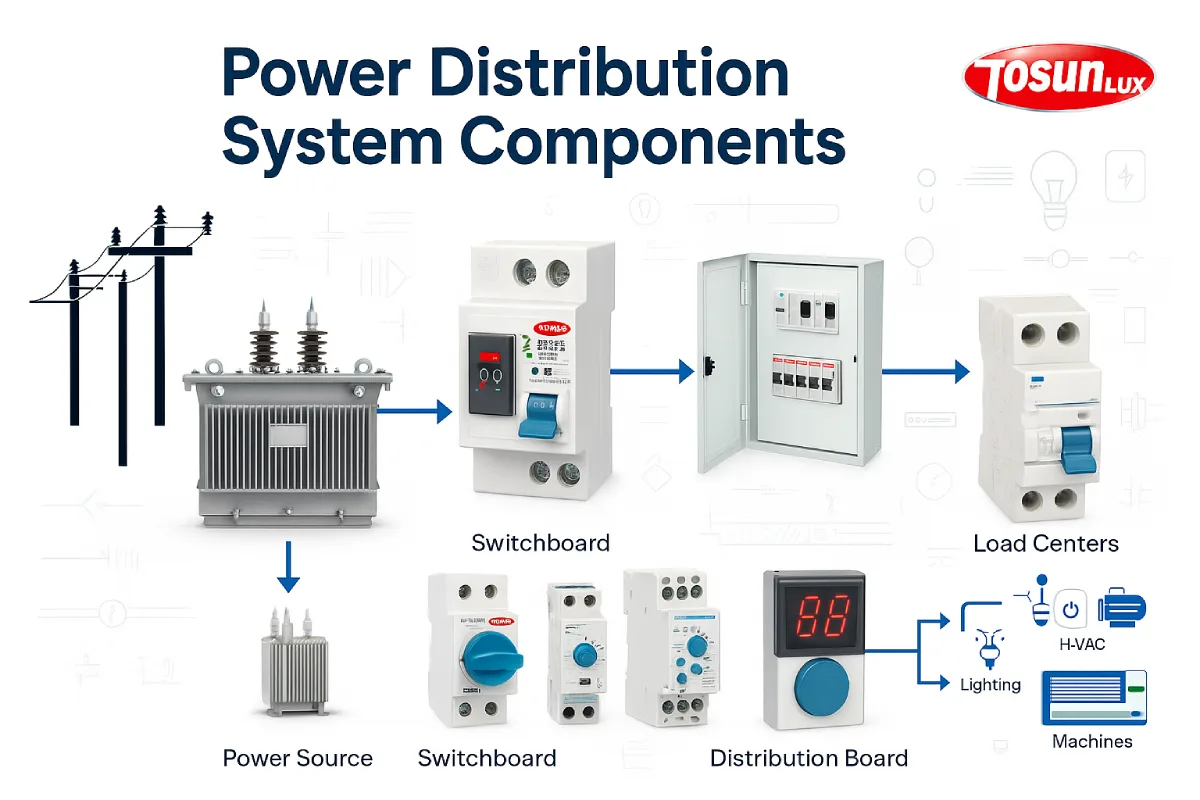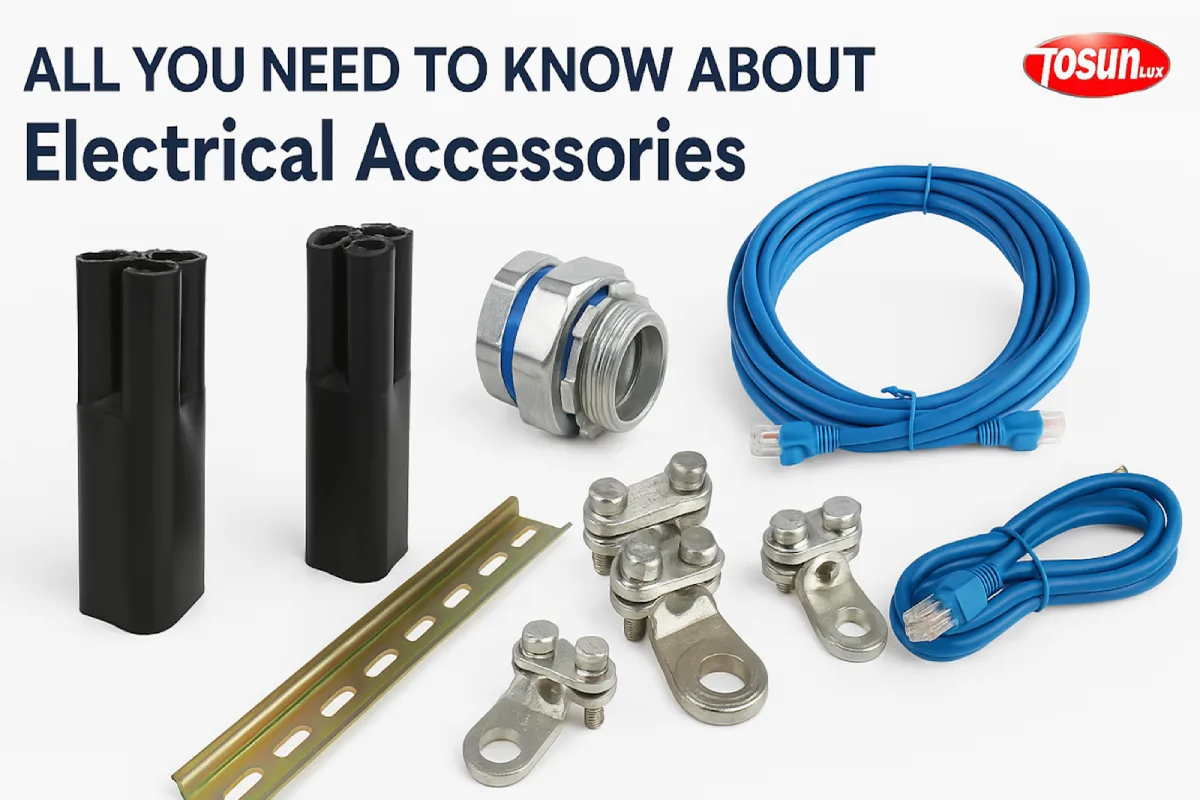Comprensión del sistema eléctrico de un edificio: una guía para principiantes
Tabla de contenidos
Palanca
An electrical system in a building is the hidden network that powers lights, appliances, heating, cooling, and every device we rely on daily. Without it, modern life comes to a stop. For beginners, understanding how this system works is essential—not just for curiosity, but also for safety, energy efficiency, and making smarter decisions when choosing products.
In this guide, you’ll learn the basics of a building electrical distribution system, discover the role of electrical devices, and see why reliable components are the foundation of comfort and safety.
What Is an Electrical System in a Building?
An electrical system in a building is the complete setup that delivers electricity from the utility supply to every outlet, switch, and device inside. It includes wiring, distribution boards, rompedores de circuito, meters, transformadores, and all the electrical devices that make power usable.
Conclusiones clave
- It ensures electricity flows safely and reliably.
- It distributes energy to lighting, appliances, and equipment.
- It protects people and property through safety devices.
The Flow of Electricity: From Source to Socket

Electricity enters a building through a service connection, usually from the local utility provider. From there, it passes through the main distribution board and is divided into circuits. Each circuit powers specific areas, such as lighting, outlets, or large appliances.
This structured design prevents overloads, allows energy efficiency, and simplifies maintenance. For example, if a short circuit occurs in the kitchen, only that section is cut off instead of the entire building. This organization is the heart of the building’s electrical distribution system.
Essential Electrical Devices in Buildings
Encendiendo
Encendiendo is the easiest part of an electrical system in a building to notice because it affects daily life directly. From simple bulbs to modern LED lights, these devices turn electricity into light we can see. LEDs are now the top choice because they save energy, last longer, and give off less heat. Buildings also use other types of lighting, such as emergency lamps, outdoor floodlights, and motion-sensor lights, for safety and convenience.
Switches and Controls
A wall switch may look simple, but it controls how electricity flows through a circuit. Standard switches turn lights on and off, while dimmer switches adjust brightness and save energy. Many buildings now use smart switches, which connect to apps or voice assistants. These smart options make life easier and add safety by allowing schedules and remote control.
Appliances and Equipment
Appliances use a lot of power in a building. Big appliances like refrigerators, washing machines, dishwashers, and air conditioners need steady electricity and often run on dedicated circuits so they don’t overload the system. Smaller devices, such as microwaves and computers, are usually grouped on shared circuits. Understanding how much power these appliances use helps people save energy and avoid electrical problems.
Motors, Pumps, and HVAC
Motors change electrical energy into movement. You’ll find them in elevators, fans, and other machines. Pumps move water or air, like in wells, aquariums, or ventilation systems. Together, motors and pumps are part of HVAC (Heating, Ventilation, and Air Conditioning) systems. HVAC systems are very important in keeping buildings comfortable and healthy. They use advanced controls to save energy and maintain good air quality throughout the year.
Distribution Boards and Circuit Breakers
The distribution board is the main hub of a building’s electrical distribution system. It divides electricity into smaller circuits so different parts of a building can run safely and efficiently. Inside, circuit breakers protect the wiring by shutting off power when there’s an overload or fault. Unlike fuses, breakers can be reset instead of replaced. Modern versions like RCCBs (Residual Current Circuit Breakers) and MCCBs (Molded Case Circuit Breakers) give even more protection by guarding against short circuits and leakage currents.
Transformers and Meters
Transformers adjust voltage so electricity can be used safely in smaller circuits. For example, they step down high-voltage power from the grid to levels safe for lights and appliances. Electric meters measure how much electricity a building uses. Newer smart meters go further, showing real-time energy use, tracking costs, and even sending data to mobile apps. This helps both homes and businesses control usage and improve efficiency.
Why Safety Comes First
Electricity is powerful but potentially dangerous. This is why every electrical system in a building includes protective measures. Circuit breakers, residual current devices (RCDs), and grounding systems minimize risks of fire or electric shock.
High-quality components play a critical role here. Inferior products may fail under stress, leading to hazards. Choosing reliable suppliers ensures the system’s safety and long-term performance.
How to Choose Electrical Devices and Suppliers
When selecting components for your building:
- Experience matters: Established suppliers have proven track records.
- Variety and compatibility: A good supplier provides a wide range of devices designed to work together.
- Quality approvals: Look for certifications such as CE, TUV, or equivalent.
- Customer support: Reliable logistics and service after purchase are key.
As Tongsheng emphasizes, a supplier should be able to provide products for every part of the system, ensuring compatibility and reliability.
Energy Efficiency and Modern Trends
Modern electrical systems are evolving. Energy efficiency and sustainability are top priorities, with buildings now integrating renewable energy sources such as solar panels and smart meters. LED lighting, motion sensors, and advanced HVAC controls reduce unnecessary consumption.
Another rising trend is electric vehicle (EV) charging stations, now increasingly included in new building designs. These add-ons extend the role of the building electrical distribution system far beyond basic needs.
Conclusion: Building a Reliable Future
A safe and reliable electrical system in a building is not just about wires and switches—it is about ensuring daily comfort, safety, and energy efficiency. By choosing high-quality dispositivos eléctricos and working with trusted suppliers, you create a foundation for long-term performance.
At TOSUNlux, we understand the importance of dependable solutions. As an experienced electrical circuit breaker manufacturer, we provide a collection of low-voltage distribution products, lighting solutions, and accessories designed for compatibility and reliability. Explore more at TOSUNlux to find the right components for your project.
Preguntas frecuentes
Q1: What is an electrical system in a building?
It is the setup of wiring, boards, breakers, and devices that delivers safe electricity to power lights, appliances, and equipment.
Q2: Why are circuit breakers important?
They protect people and property by cutting power during overloads or faults.
Q3: What are the main electrical devices in buildings?
Lighting, switches, appliances, motors, pumps, HVAC, transformers, meters, and distribution boards.Q4: How can I make my electrical system energy efficient?
Use LED lights, smart controls, efficient appliances, and integrate renewable energy sources when possible.
Teléfono: +86-577-88671000
Correo electrónico: ceo@tosun.com
Skype: tosunelectric
WeChat: +86-139 6881 9286
WhatsApp: +86-139 0587 7291
Dirección: Sala n.º 1001 Wenzhou Fortune Center, Station Road, Wenzhou, China
SOLICITAR PRESUPUESTO
Envíanos un WhatsApp
 : +86-139 0587 7291
: +86-139 0587 7291 Inglés
Inglés Español
Español Ruso
Ruso Francés
Francés árabe
árabe Portugués de Brasil
Portugués de Brasil Ucraniana
Ucraniana Turco
Turco Polaco
Polaco Países Bajos
Países Bajos italiano
italiano Lenguaje indonesio
Lenguaje indonesio Hindi
Hindi árabe
árabe አማርኛ
አማርኛ Հայերեն
Հայերեն Sí
Sí Mongol
Mongol فارسی
فارسی Chisme
Chisme Elogio
Elogio


